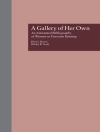
In the nineteenth century France became fixated on infant sleep. Pictures of sleeping babies proliferated in paintings, posters, and advertisements for cradles and toys. Childcare manuals and medical writings insisted on the importance of sleep as a measure of a child’s future health and vigour. Infant sleep was transformed from an unremarkable event to a precarious stage of life that demanded monitoring, support, and, above all, the constant presence and attention of mothers. Hush Little Baby uncovers the cultural, medical, and economic forces that came to shape Western ideas about infants’ sleeping patterns, rituals, and settings. By the mid-nineteenth century doctors were advising that infant sleep should be carefully controlled by caregivers according to medical guidelines, and that to do otherwise would risk compromising a child’s development. A sleeping baby was seen as the sign of a good mother – an idea that was reinforced through countless pictures of mothers watching vigilantly over their sleeping children, even as the reality of postpartum depression was known to doctors. The medical advice literature also helped to create a commercial infant industry, encouraging the production of clothing, bedding, cradles, and accessories designed to foster sleep, and providing new ways for families to demonstrate social status. In Hush Little Baby Gal Ventura shows how these images and ideas about babies’ sleep created many of the standards and expectations that keep parents awake today.











